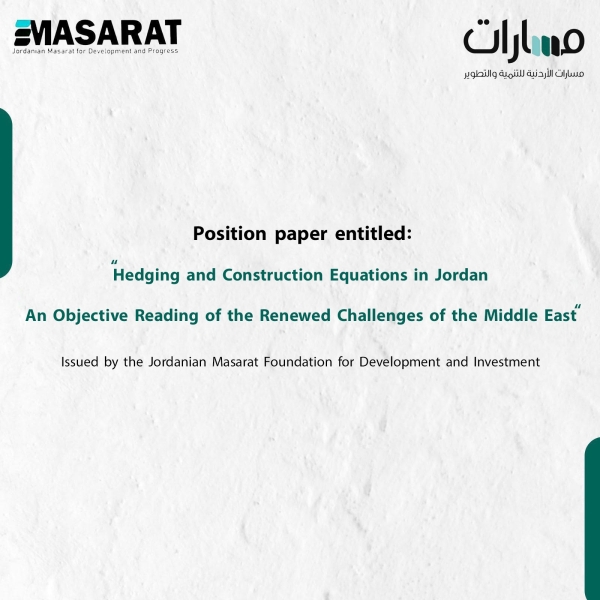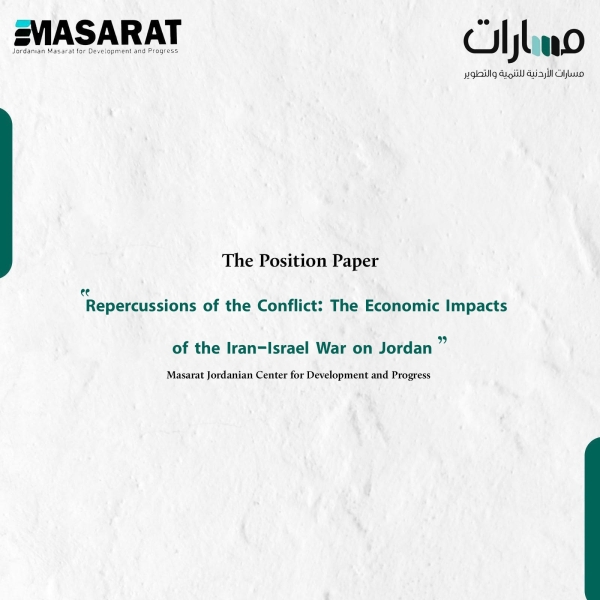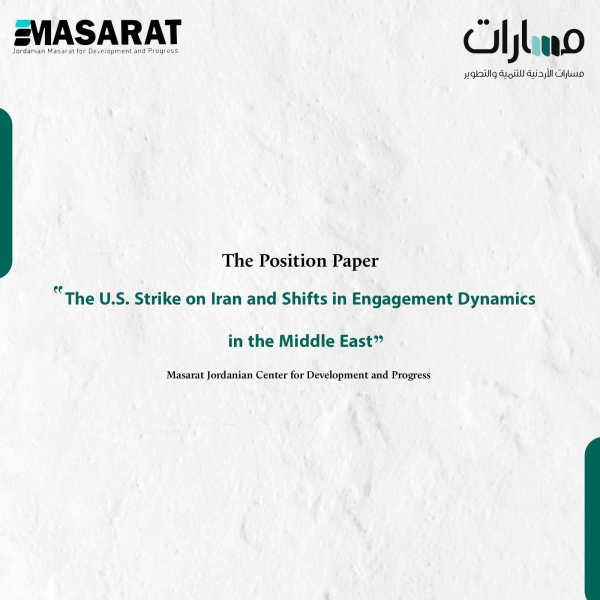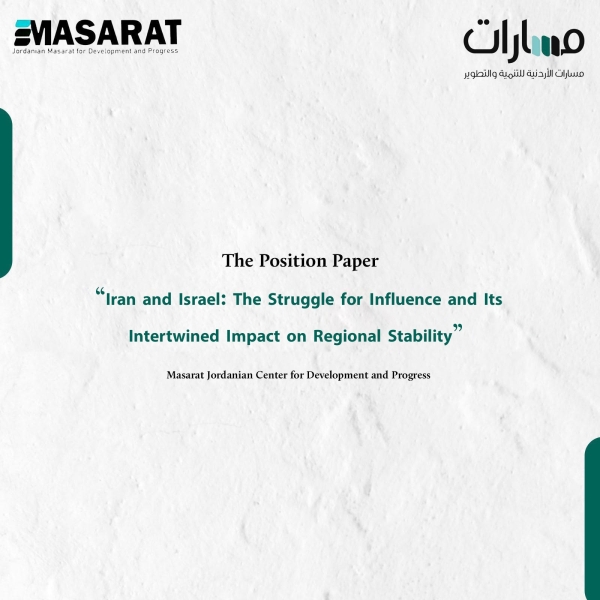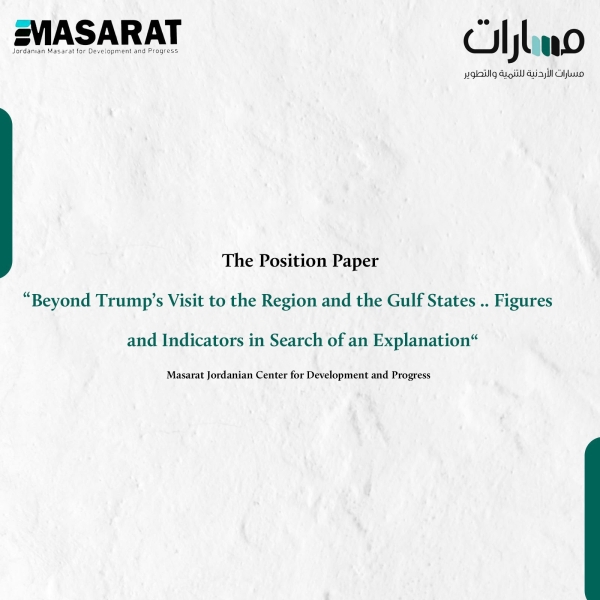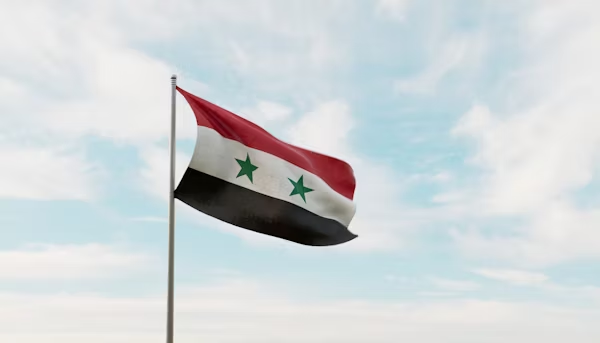"The Jordanian State and the Dismantling of the Muslim Brotherhood Equation"
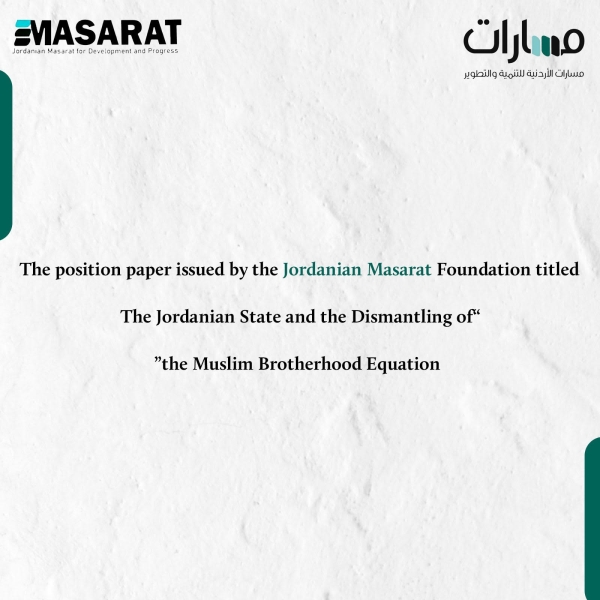
The decision by the Jordanian Ministry of Interior to ban the activities of the Muslim Brotherhood and to designate it as an illegitimate entity represents a pivotal moment in the formation of a new political contract within the Jordanian state. This is not merely an administrative measure or a response to a temporary situation, but rather an expression of a profound transformation in the state's sovereign perspective toward political actors with transnational affiliations. It serves as a lesson for the traditional patterns of balance that have long governed the relationship between the state and ideological organizations with supra-national extensions.
At its core, this decision does not belong to the realm of simple administrative actions. It is built upon a strategic foundation that reflects the state’s growing awareness of the risks posed by the overlap between legitimate political activity and organizational work based on parallel loyalties. Thus, the ban marks a historic moment that calls for a deliberate analytical reading—one that goes beyond the conventional literature used to interpret the state’s relationship with political groups. It requires a synthetic approach that enables a deeper understanding of the ongoing transformations within the structure of the Jordanian political system.
While the Jordanian state has, for decades, maintained a methodology that oscillated between containment and accommodation in its dealings with the Muslim Brotherhood, the recent decision indicates a departure from this traditional approach. It favors a more decisive vision based on a comprehensive security-political approach, one that aims to safeguard the political sphere from transnational ideological infiltration and to reinforce the logic of the state as the exclusive framework for political agency.
This decision cannot be separated from the current moment of political and constitutional modernization that the Kingdom is undergoing—an era that reflects a growing political will to reengineer the relationship between the state and its citizens within new contractual frameworks. These frameworks seek to redefine concepts such as legitimacy, legality, and public engagement. In this sense, the ban is an institutional measure born out of strategic awareness of the dangers of dual loyalty and fragmented authority, especially in a turbulent regional environment that continues to reproduce ideologically driven organizations as alternatives to the state, rather than within its framework.
This analytical paper, issued by the Jordanian Masarat Foundation for Development and Progress, constitutes a research contribution that seeks to deconstruct the implicit meanings of the decision, to explore its political and organizational dimensions, and to assess its ripple effects within the Jordanian political field, both in the short and medium term. It avoids falling into the trap of justification or advocacy. Instead, it constructs a knowledge-based vision grounded in complex analytical tools, drawing upon political history, extrapolating emerging trends in state thinking, and anticipating the future configurations of political action in the post-ban era.
From the Moment of the Ban
It is necessary to conduct an in-depth analytical reading of the phase that followed the decision to ban the Muslim Brotherhood, and to examine its complex ramifications across all political, constitutional, and legal levels. The debate has centered around the fate of the political party organizationally linked to the Brotherhood, and the extent to which it may continue or face dissolution, along with the potential implications of this on parliamentary life and the redistribution of power dynamics within the current House of Representatives.
In this context, an approach has emerged suggesting that the ban on the parent organization should not be viewed in isolation from the broader process of organizational restructuring. From one angle, the decision marked a decisive moment of separation between components that had previously been forcibly merged under a single framework, creating structural overlap between the religious (da'wa) and political spheres. This overlap—initially accepted by the political system under complex historical conditions—has been a subject of internal debate since the party’s founding in 1992, when the idea of licensing the Brotherhood as a political entity was abandoned out of concern that it would lead to a contradictory duality between the logic of the state and the logic of the organization.
However, today the equation has shifted: the Brotherhood has been banned, while the party remains legally recognized. This places the party before an existential obligation to redefine itself as a purely political actor operating within legal boundaries, and to dismantle the dual loyalties between national and transnational affiliations.
Background and Implications of the Decision
From a different perspective, the decision is not inconsistent with the logic of political modernization. Rather, it presents an objective opportunity to advance this project by putting an end to the ambiguity that has long characterized political engagement in the country, resolving the issue of organizational duality, and reinforcing the unity of legal reference for the state and its political actors. It was clearly stated that the continuation of the party is objectively contingent on its ability to prove independence from the banned Brotherhood and to reposition itself as a disciplined political actor operating within constitutional limits and outside unlicensed organizational frameworks.
However, this perspective was not unanimously accepted. Others expressed concern over the way some parties and forces responded to the decision, viewing it as an opportunistic move to reposition themselves politically—one that failed to align with the sensitivity of the national moment or reflect a mature political awareness of the current phase. These actions were described as damaging to public trust in political discourse and revealing a fragility in understanding the complexities of the political scene and the risks of tactically exploiting critical junctures.
The discussion also reviewed the long historical trajectory of the state’s relationship with Islamic movements, spanning more than seven decades. Despite the challenges, this relationship has largely been characterized by an approach of containment. The state did not seek exclusion or eradication; rather, it maintained, for the most part, a calculated openness toward these movements, viewing them as active national components.
Unlike some regional experiences, the Jordanian state has never institutionalized a policy of "demonization" toward any political current, including ideological ones with nationalist or leftist backgrounds—even when some of these currents crossed national red lines at certain historical points. The state, even in its most difficult times, has upheld a methodology that distinguishes between individual choices made by members and the political or ideological entity as a whole. This restraint reflects positively on the state’s political maturity and the prudence of its public administration.
It was emphasized that the recent developments in the political scene do not pose a threat to the political modernization project. On the contrary, they may be viewed as additional evidence of the state's consolidation as a legal institution, equipped with the tools to manage political pluralism within a framework of transparency and legal discipline. The more the legal references remain clear, standards unified, and rulings based on written law rather than personal whims, the greater the citizen’s trust in the political project—and the stronger the elite’s conviction in the seriousness of the reform path and the state's credibility in embracing diversity rather than excluding it.
Additionally, the historical dimension of the state’s relationship with Islamic movements was addressed—outside of media-driven distortions or reactionary interpretations. A retrospective perspective was presented, affirming that, during their early formation, Islamic movements did not approach party work as an end in itself. Rather, they were driven by a broader renaissance project that transcended the geographical borders of the nation-state and targeted the Muslim "ummah" as a symbolic and conceptual whole, not the state as a space for organized political competition.
The historical reading revealed that the turn toward politicization resulted from gradual accumulations and adaptations as the public sphere opened up. Initial attempts emerged to frame political activity within a legally recognized party structure separate from the religious (da‘wa) framework. At the time, the Brotherhood submitted organizational documents indicating an intention to form a political party that would represent the Islamic component within a pluralistic system, while maintaining a level of internal balance that allowed for grassroots representation without undermining organizational unity.
However, those attempts met with strong internal resistance. This resistance took the form of currents that rejected any separation between the religious and political domains and insisted on maintaining organizational control within the party. They imposed conditions and mechanisms that restricted the party’s independence and tied its leadership decisions to external authorities. This dual structure came to be seen as a violation of the principle of party autonomy and a constant source of tension with the state, in addition to weakening the party’s ability to align with the rules of local political engagement.
On the regional level, the debate was linked to major transformations that have shaken the Brotherhood’s structure over the past decade, especially in the wake of the so-called “Arab Spring.” During this period, the Brotherhood’s network of regional alliances, which had provided it with political and financial backing, collapsed. Some of the countries that had previously supported the group shifted to positions of suspicion or rejection. This left the organization facing a critical moment of reckoning—a moment that has not yet matured into a full-scale structural redefinition. Instead, it has exposed the Brotherhood’s vulnerability to self-erosion amid rapid changes and the loss of external support.
The Complex Relationship with the Brotherhood
Amid the political transformations unfolding across the region, the need has emerged for a deep and calm reading of the complex relationship between the Jordanian state and Islamic movements, especially in light of the accumulated issues and the context of polarization that has accompanied them. The session reaffirmed the importance of preserving political pluralism and enabling parties with broad popular bases to continue participating in the organized political sphere—provided they strictly adhere to constitutional principles and actively engage in the political modernization project from within institutional frameworks, not outside them.
This approach was clearly linked to the higher national interest, which requires the consolidation of a culture of political participation, the expansion of representation spaces, and the enhancement of oversight and accountability tools. These are seen as part of the groundwork for the parliamentary government model, considered an advanced formula for good governance that rests on a popular base and mature constitutional consensus.
In this context, there was an emphasis on respecting the legitimacy of the decision to ban the Brotherhood, as part of the rule of law. However, it was also stressed that this decision should not be exploited in retaliatory contexts or short-sighted political one-upmanship, which could deepen polarization and weaken internal cohesion.
This approach is based on an analytical vision that repositions the state-Islamic movement relationship within a long historical context, highlighting pivotal moments that marked sharp turns in this relationship. Chief among these was the First Gulf War, which represented a breaking point in the relationship between political Islam and the state—not only in Jordan, but across the region. That phase coincided with the exposure of the limitations of traditional Islamic discourse when confronted with the realities of the nation-state and national interest.
This shift was further reinforced by major unrest in other Arab countries—from Algeria to Egypt to Syria—where the rise of Islamic movements amid the erosion of the middle class and lack of social justice fueled political violence. This prompted states to redefine their relationship with these movements, especially as some of them insisted on positioning themselves outside the national framework and rejecting integration within sovereign institutions.
From the perspective of political identity analysis, attention was drawn to the dilemma faced by ideological movements with a totalizing worldview, which continue to operate within pan-Islamic and revivalist narratives that transcend the borders of the nation-state. This hampers their positioning in the local political system and leaves them in a gray area—one in which it becomes difficult to distinguish between legitimate national opposition and positions outside the national consensus.
Accordingly, redefining the relationship between the state and these movements does not require exclusion, but rather a redefinition of the political role of religious-based movements. This must be based on commitment to the nation-state as the ultimate reference, and the acceptance of pluralism and difference within democratic frameworks—in a way that renews the political field without compromising its foundational principles.
The Brotherhood’s Dilemma
Amid the delicate transformations characterizing the current political moment, an urgent need has emerged to dismantle the historical duality that has defined the relationship between the preaching (da‘wa) and political dimensions in the experience of Islamic movements. It was reiterated that it is no longer acceptable—legally or politically—for a political entity to hide behind charitable fronts or civil society organizations, or to use civic work as a cover to advance an organized political agenda operated behind the scenes, far from the principles of transparency, openness, and constitutional legitimacy.
In this context, a paradox was raised regarding how a movement that has long defined itself as a “comprehensive renaissance project” has come to operate within limited legal frameworks such as charitable associations or NGOs. This shift was described not as the result of genuine intellectual reassessment or engagement in self-criticism, but rather as a calculated tactical withdrawal aimed at repositioning itself in a changing political environment—without closing the door on reactivating the project when the moment becomes opportune.
At the official level, the analysis pointed out that the state is not adopting a strategy of eradication or total rupture. Rather, it is moving toward imposing a new equation based on clarity and transparency in its relationship with these movements. This approach seeks to put an end to the political ambiguity and pragmatism that have dominated the scene for decades. As participants described, this moment requires the articulation of a clear and unambiguous political discourse that explicitly defines the limits of the relationship between the state and these movements, and that solidifies the rules of legitimate political engagement within agreed-upon constitutional and institutional frameworks.
Within this framework, a fundamental question was raised—one that should serve as the serious entry point for any future discussion about the place of Islamic movements within the national political system:
Do these movements possess not only the capacity, but also the willingness to redefine themselves? And can they shift their project from a transnational, pan-Islamic space into the realm of the modern nation-state—a shift that would require a deep reassessment of foundational concepts, foremost among them the idea of the “Caliphate”, in favor of the civil state based on equal citizenship, constitutionalism, and the rule of law as the ultimate reference for public life?
These questions—while they may appear theoretical—actually represent a real test of the seriousness of any genuine democratic transition, and of the ability of Islamic movements to integrate into the national project, not merely as political entities, but as responsible actors who accept the rules of democratic governance and commit to the principles of the modern state—without double discourse or divided loyalties.
The Overlap of Political and Religious Discourse: A Call for Separation
From an intellectual standpoint, the discussion paused at the ambiguous relationship between religious discourse and political discourse, and called for untangling this overlap in order to preserve the integrity of the religious sphere from political exploitation. At the same time, this separation is necessary to ensure clarity in party platforms as civil projects that do not seek empowerment through the sacred. Emphasis was placed on the importance of separating emotion and impulsivity from rational analysis, one that elevates the national interest above the priorities of the organization.
There was a call to refocus the discussion on what the party’s role should be today, not what it once was. This requires a reconsideration of the session’s title, which was described as suggesting that the binary relationship between the state and the group still exists—whereas the political reality has moved beyond that phase. As presented, the Brotherhood file has been closed with a clear political will, and is no longer on the table—not in decision-making circles nor in the broader political community.
If the party wishes to remain and engage, it must reposition itself within the rules of the new political game, not as an extension of an organizational past, but as a civil entity that addresses the state and society in the language of politics and institutions, not through ideological alignment or symbolic power-sharing.
It was stressed that the political modernization project is moving forward, and will not be halted by the hesitations of certain actors or narrow interests. This transformation is not a selective option, but an expression of a national will led by the state, as the guarantor of the public good. The door remains open to anyone who chooses to operate within the constitutional framework—without circumvention and without waiting for exceptions.
Key Affirmations
- A firm expression of confidence in the Jordanian state, in its leadership and institutions, to manage this critical file with wisdom rooted in national principles, without compromising its legal foundations or bargaining over its constitutional sovereignty.
- A clear linkage was drawn between the steadfast political position of the Jordanian state—especially its continued defense of the causes of the Arab nation, foremost the Palestinian cause—and its parallel capacity to enforce and uphold the law within its sovereign borders.
- A bold and direct call was made to the Islamic movement to move beyond the state of “political denial” and present clear, transparent legal proposals that reflect genuine commitment to the modern state—not just at the level of rhetoric, but also in terms of organizational structure and political approach. The Turkish model, with its structural transformations and constitutional flexibility, was cited as a potential reference, not just in institutional form, but in the political essence that unifies party discourse with society, and resolves the division between the missionary (da‘wa) project and political practice.
- A clear invitation was made to the political party in question to conduct a comprehensive internal review, courageously addressing its leadership structure and decision-making mechanisms, to redefine the responsibilities of leadership as a moral and political bearer of the organization’s vision. It was explicitly stated that leadership—even if not legally condemned—remains politically and ethically accountable to both society and the state. In this context, resignation, at this moment, is not weakness or retreat but rather a mature expression of self-respect, respect for the state, and respect for the public.
- The rules of political engagement within the party must be redefined on the basis of transparency, honesty, and deep national belonging, without compromising the collective national identity. It was emphasized that the slogan “Jordan First” has never been an enemy of Palestine, but rather a reflection of the profound understanding that a stable and strong nation-state is the true incubator and effective guarantor of the nation’s causes—not angry rhetoric, nor fleeting slogans, nor political one-upmanship that drains the state’s credibility with no return.

